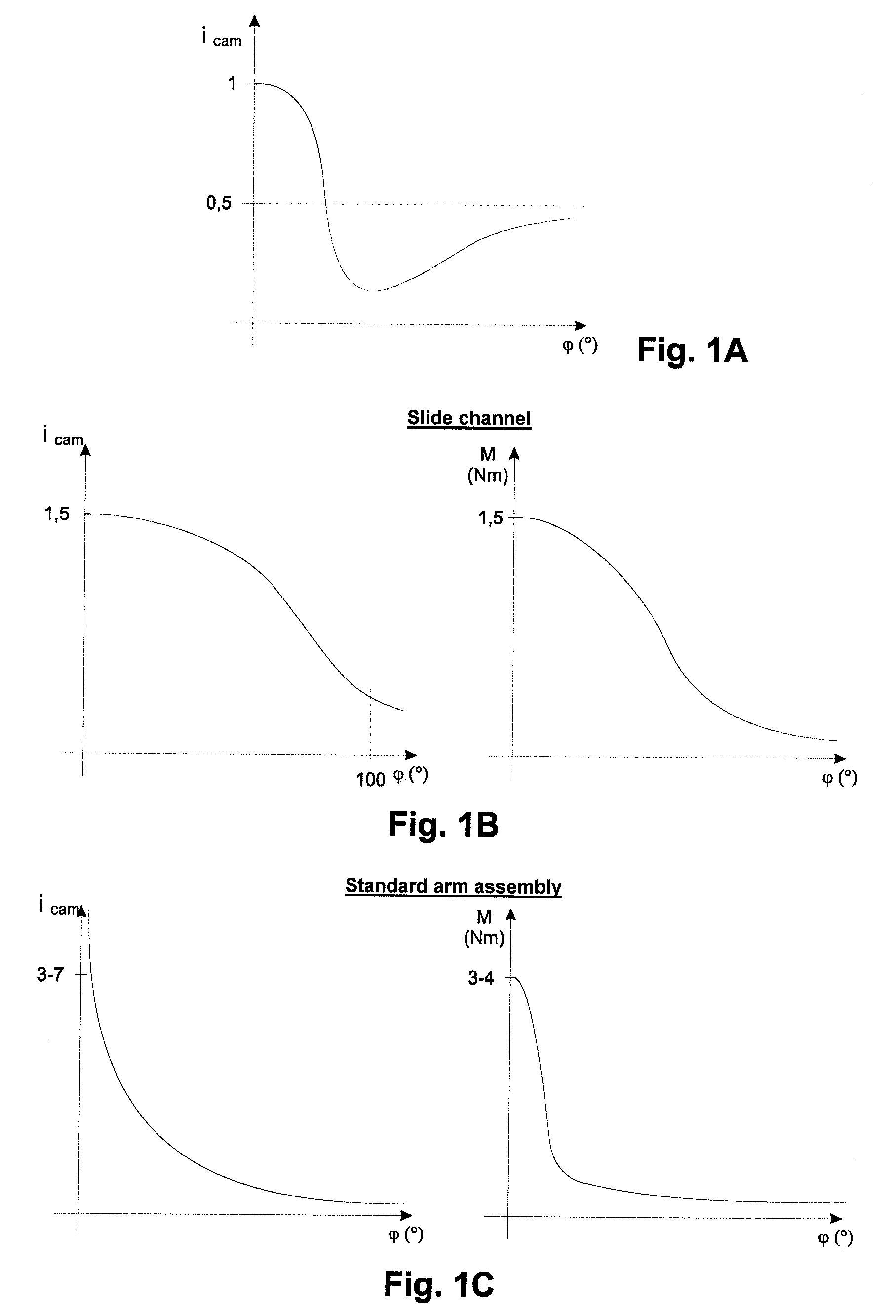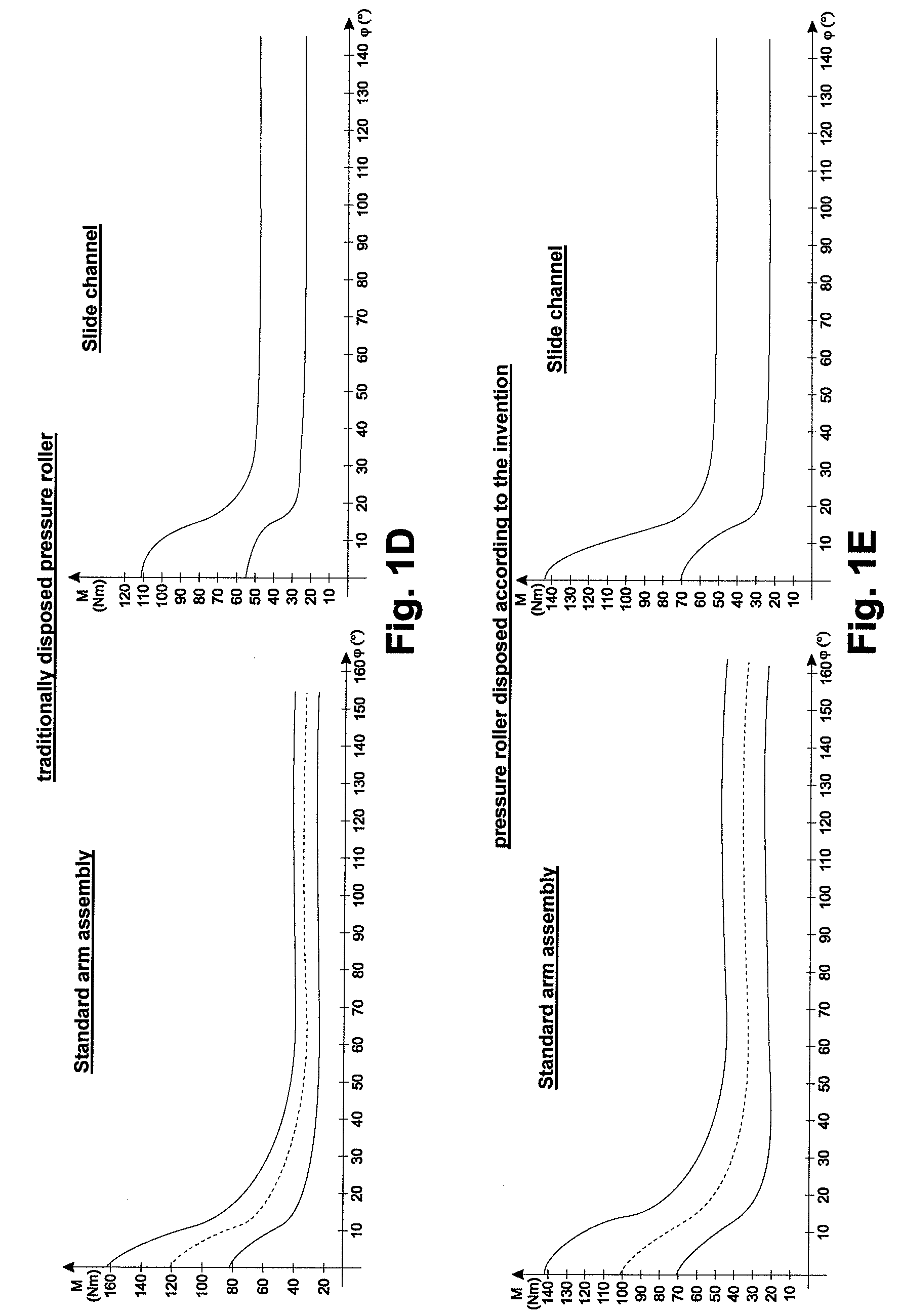Door closer
a door and closer technology, applied in the field of door closers, can solve the problem of inability to convert to fire protection functions, and achieve the effect of inexpensive adaptation
- Summary
- Abstract
- Description
- Claims
- Application Information
AI Technical Summary
Benefits of technology
Problems solved by technology
Method used
Image
Examples
first embodiment
[0063]A door closer 100 according to the invention, as shown in the FIGS. 2A to 2C, has a pressure roller 101, which is pressed against a cam disc 103 by means of a closer spring 102, which disc is torsion-resistantly disposed on an output shaft 104 of the closer portion 100.
[0064]The pressure roller 101 is disposed such that a line, which is substantially defined by the translational movement thereof, bypasses the axial center of the output shaft 104.
[0065]As shown in FIG. 2A, the closer spring 102 is disposed on a side of the cam disc 103, on which the pressure roller 101 is likewise disposed. The closer spring 102 presses the pressure roller 101 against the cam disc 103 by means of an operational connection in the shape of a connecting rod 111. The connecting rod 111 is guided in a guide 105 such that it is only movable translationally towards the cam disc 103 or away from it. A force of the closer spring 102 thus acts in the +x-coordinate direction.
[0066]As an alternative, as sh...
second embodiment
[0068]In a door closer 100 according to the invention shown in FIG. 3A, the closer spring 102 is in operational connection with a pressure roller 101 by means of a transmission gear, which preferably has the shape of a lever assembly. Via a lever 107, the closer spring 102 pulls the pressure roller 101 into the direction of the cam disc 103, thus acting in the −x-coordinate direction. Even if the path of motion of the pressure roller 101 describes a circle, it will bypass the axial center of the output shaft 104 along the entire path of motion.
[0069]FIG. 3B illustrates an alternative lever assembly. In contrast to FIG. 3A, in this case, the closer spring 102 presses the pressure roller 101 against the cam disc 103 by means of a lever 107, this means in the +x-coordinate direction. With regard to the pressure roller 101, the same findings apply for FIG. 3A.
third embodiment
[0070]In a door closer 100 according to the invention shown in FIG. 4, it is intended to dispose the assembly of closer spring 102 and the operational connection thereof with the pressure roller 101 (for example the lever 107) rotating about a point, this means at an angle α, which point does not correspond to the axial center of an output shaft 104 of the door closer 100.
PUM
 Login to View More
Login to View More Abstract
Description
Claims
Application Information
 Login to View More
Login to View More - R&D
- Intellectual Property
- Life Sciences
- Materials
- Tech Scout
- Unparalleled Data Quality
- Higher Quality Content
- 60% Fewer Hallucinations
Browse by: Latest US Patents, China's latest patents, Technical Efficacy Thesaurus, Application Domain, Technology Topic, Popular Technical Reports.
© 2025 PatSnap. All rights reserved.Legal|Privacy policy|Modern Slavery Act Transparency Statement|Sitemap|About US| Contact US: help@patsnap.com



